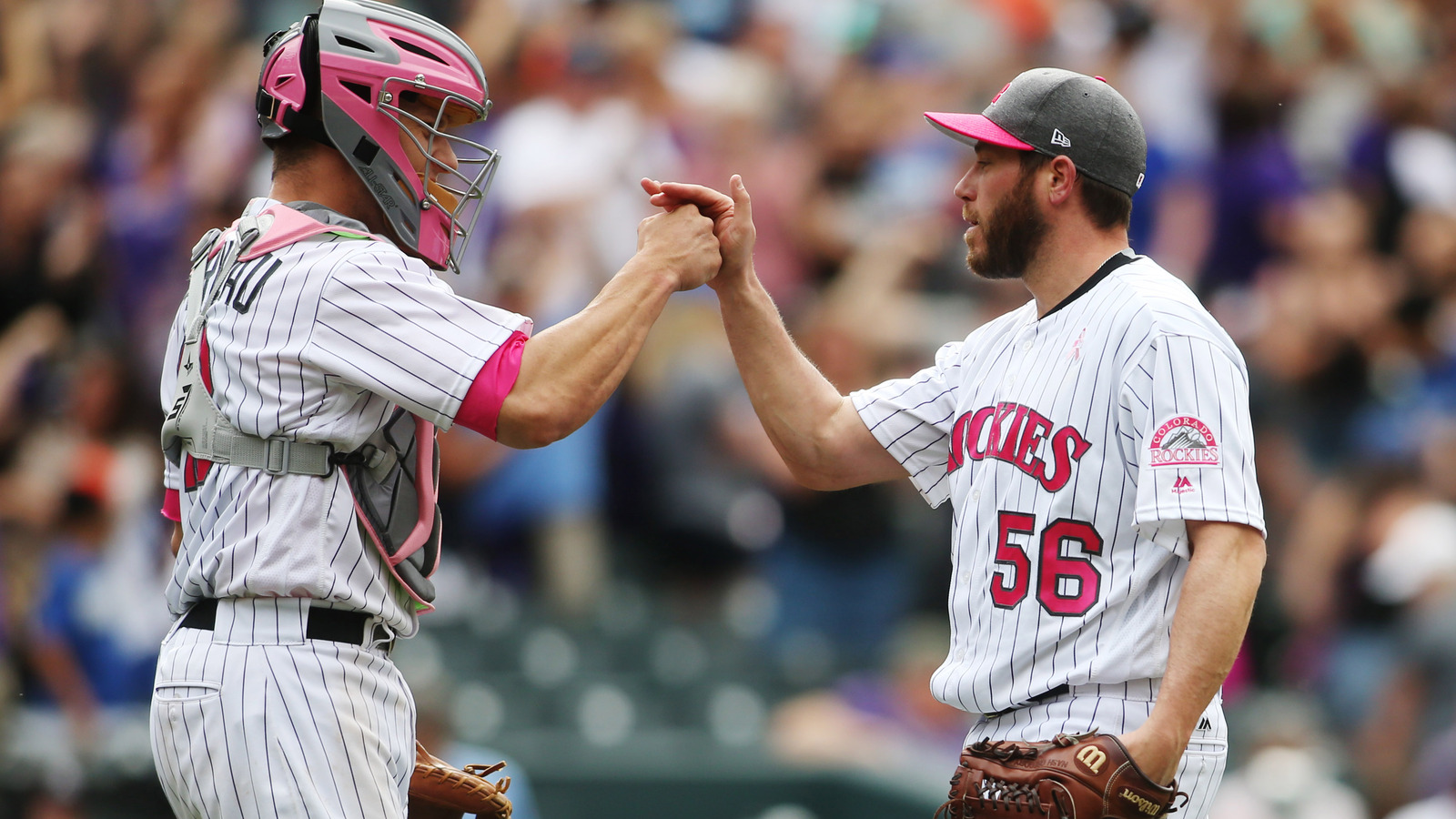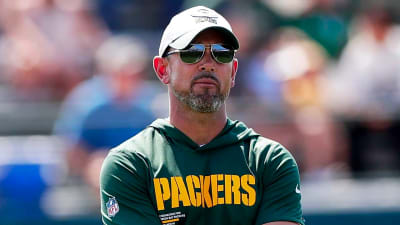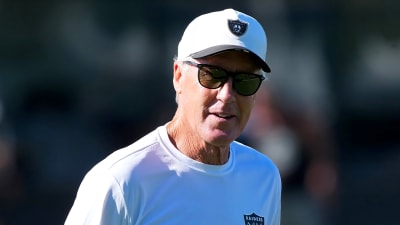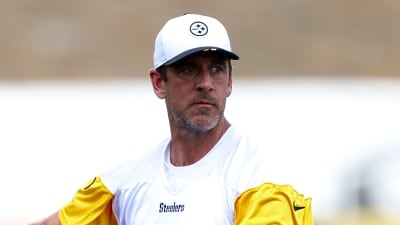
The Rockies' underrated revival is real
In the marathon that is the Major League Baseball season, it is easy – practical even – not trust all that you see early in the year. A fast start to a season can be erased as easily as a three-run lead within the generous confines of Coors Field.
Various mile markers are used by followers of the game to provided context for trusting early returns: "It’s only the spring," is a popular one, as is the idea of using holidays as benchmarks. (I believe Memorial Day is next up on the list of cautionary points). This generally continues all the way until the All-Star break, when returns are traditionally considered to be set in concrete by all.
It is underneath the guise in the young 2017 season we find the curious case of the Colorado Rockies, who have long stood as one of the game’s great mirages. Wins stand up no matter when they occur, and the Rockies have gotten off to such a substantial start to the year that they have virtually assured themselves of a place to at least compete in the postseason picture down the road. Armed with one of the game’s top talents in Nolan Arenado, the Rockies check in halfway through May nine games north of .500 and have done so in the most competitive division in the National League.
Why is this so shocking? Shouldn’t a talented club built around one of the game’s great talents in Arenado, the reigning NL batting champ D.J. LeMahieu, a handful of recent All-Stars (Charlie Blackmon, Carlos Gonzalez and Ian Desmond), along with a solid veteran core and a few bright young talents, be in position to create these types of returns?
In theory, yes. But the Jekyll-and-Hyde act of the Rockies is well-known. An annually potent offense and formidable force on their home grounds, they are a completely different case on the road. Only once in the past five years has the team kept its batting average on the road within 50 points of the mark at home. Over the last four full seasons, the Rockies have managed to win only 115 games away from home, good for a .354 win percentage. Conversely, they have stayed above .500 at home in three of their last four years and still hit over .300 as a team at home in the sole season in which they did not have a winning record at Coors Field in 2015.
But things have been different thus far, as Colorado carries an 11-5 record on the road into the week, which is better than the home mark of 13-10 so far. Granted, a few of those home losses came at the hands of the relentless Washington Nationals, who posted over 40 runs against Rocks in a visit early in the month, but regardless, they have been a noticeably more balanced club this season than in any other in recent history.
So why should anybody be ready to give such a small sample size of success the benefit of the doubt? After all, the bipolar Rockies have not had a winning record since 2010 and have not finished with a winning record since the year before that. The keys to their success have not simply been pure luck, lack of suitable competition or producing runs at an unsustainable level even higher than their usual output.

Instead, their strategy smartened up and is paying out dividends. After being plagued with a pitching staff ravaged by the notoriously unforgiving thin air of Denver, which even the best efforts of the infamous humidor within the park can barely dampen, the Rockies' tactics this offseason changed. No longer are they simply rolling the balls out and hoping for the best, resigned to the fact that consistent, high-quality pitching will never be an asset they will possess. Instead, they made the decision to build from the back of the game forward, investing over $25 million into the arms of Greg Holland and Mike Dunn, with the hopes of not only revamping their bullpen, but also lowering the burden of responsibility on their starting staff and shifting it to the bullpen.
And thus far, the tactic is paying out phenomenal dividends. The team struck gold in betting on Holland to make a return from Tommy John surgery that kept him out action since late 2015. A two-time All-Star and top-10 Cy Young finisher for the Royals in 2013-14, Holland is making up for lost time this year, as he carries an ERA hovering around 1.00, while leading the National League in saves (16) and games finished (17). Most importantly, he is doing two things that are more essential to pitching success as a Rockie than with any other club: not putting runners on base and missing bats. His 1.19 FIP (Fielding Independent Pitching) is better than any of his All-Star campaigns in Kansas City.
Meanwhile, Dunn has done a phenomenal job of paving the path to the ninth. The 32-year-old former Marlin is also posting a career-best FIP (2.74), while averaging over 11 strikeouts per nine innings. As a complete unit, the Colorado pen is posting the fourth lowest team average against in the National League entering play on Tuesday at .230, along with a 4.40 ERA. Overall, the Rockies check in just inside of the top 10 in team ERA at 4.42, a massive improvement for a team that has posted the worst ERA in the NL in four of the last five seasons.
This shift in emphasis has enabled the always formidable offensive production to mean more than it has in many years. And while the starting staff has been better as well, with a handful of young arms producing better than anticipated results, it has been the ability to finish that has changed the tone around the club.
Questions regarding sustainability will likely remain no matter what, and rightfully so. The NL West possesses three of the top five records in the National League thus far, with the Los Angeles Dodgers and Arizona Diamondbacks both breathing down the back of the division leaders in Colorado. And the Dodgers are increasing that intensity daily, having won eight of their last 10 games, pulling to within two games of the Rockies. The two clubs recently split a two-game series, proving that the Dodger tenacity will not go without resistance as the Bues in Blue attempt to claim the NL West title for the sixth straight year.
Yet, with all due respects to sample size and its contextual boundaries, the Rockies’ hot start is beginning to hit mathematical levels of impact already. They are currently on pace to touch 100 wins for the first time in franchise history. If their pace slowed even to a .500 level throughout the balance of the year, they would still sit between the 87- to 90-win mark, which should put them firmly in line for a Wild Card berth.
So maybe – just maybe – it's time to tuck away those conceptions of who the Rockies were and start paying attention to how they have evolved into who they are today. Sometimes, if you have enough of a good thing on board already, simply finding balance will do the trick. These Rockies have clearly centered themselves and risen as a result.
More must-reads:
- Rockies place SS Trevor Story on DL with shoulder injury
- Getaway Day: Time to sound the alarm in Wrigleyville?
- The 'Rockies to win the Silver Slugger Award' quiz
Breaking News
Trending News
Customize Your Newsletter
 +
+
Get the latest news and rumors, customized to your favorite sports and teams. Emailed daily. Always free!








